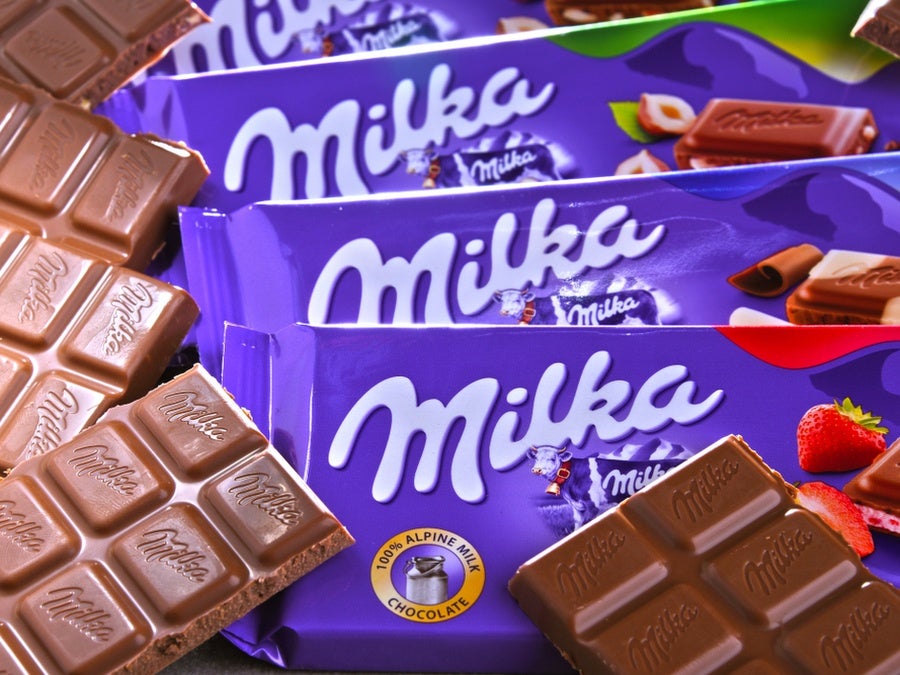
US chocolate and biscuits giant Mondelez International is planning further pricing actions in Europe despite inflationary pressure easing and some pushback from retailers.
The Cadbury chocolate and Oreo cookies owner said it has implemented most of its planned pricing actions in Europe.
But speaking to analysts yesterday (27 April), after releasing its first-quarter results, Mondelez finance chief Luca Zaramella said it will be implementing the remainder.
“We have made progress in lending expected pricing increases with circa 80% of our customers and with lower disruption than we anticipated. We are still planning for some disruption in Q2, which has been factored into our revised outlook as the remaining 20% of our customer base is not done yet. Consumer confidence has stabilised in much of the region, with many key countries trending back to spring 2022 levels,” he said.
“Elasticities of biscuits and chocolate are overall less negative than we anticipated, including in the UK, where the impact of [legislation on] HFSS [high fat, sugar and salt] products is less material than what we had forecasted. Overall, rather than cutting back significantly on size of their basket, consumers are shopping around, to find attractive deals and trading up and down in terms of pack sizes based on their specific needs and consumer occasions. They remain loyal to branded products, particularly in chocolate.
“Having said that, our focus is now on landing the remaining part of the price increases.”
Responding to an analyst’s question, Zaramella said Mondelez’s “profitability in Europe is still not where it should be so the remaining 20% of the pricing that is being implemented is important”.
He added: “But I think once you get that 20% the picture will look quite a bit different then. Europe is the biggest segment we have. And I don’t want to give the impression that we were shy on pricing, quite the opposite.”
Pricing helped Mondelez to an 18.1% year-on-year increase in sales to $9.16bn, although, as Zaramella indicated, growth in Europe at 12.7% lagged behind Latin America (46.6%), North America (26.8%) and emerging markets (21.4%). Operating income was up 37.6% compared to the same period a year ago at $1.50bn.
Steady demand for its chocolates and biscuits, despite raised prices, has led the Toblerone and Milka brands owner to raise its annual forecasts.
The company now expects 2023 organic net revenue to rise more than 10%, compared to a prior forecast of 5% to 7% growth, and profit to grow more than 10% on a constant-currency basis, compared to its earlier view of high-single digit growth.
It still has some work to do on repairing margins, however. Gross margin, fell 80 basis points to 37.6%.
In February, Mondelez had said it was pressured in Europe because there were no signs of cost inflation diminishing but Zaramella said yesterday that the situation was improving.
He said: “In terms of key assumptions, inflation is still expected to increase double-digit for 2023, driven by elevated cost in packaging energy ingredients and labour while lapping favourable hedges in 2022.”
But he added that “headwinds have moderated quite significantly”.
He said: “You know about the labour markets, the logistic situation. Our external manufacturers’ network has improved significantly. So a lot of the cost headwinds that we were facing have now eased.”
Commenting on the results, analyst John Baumgartner of Mizuho Securities said: “Even absent robust pricing, volume/mix is impressive and underpins growth. We wouldn’t be surprised to see some Q1 volume favourability from shipments timing but new distribution and innovation in emerging markets remain impactful growth drivers while limited elasticity in Western retail channels reflect attractive category positioning.”



